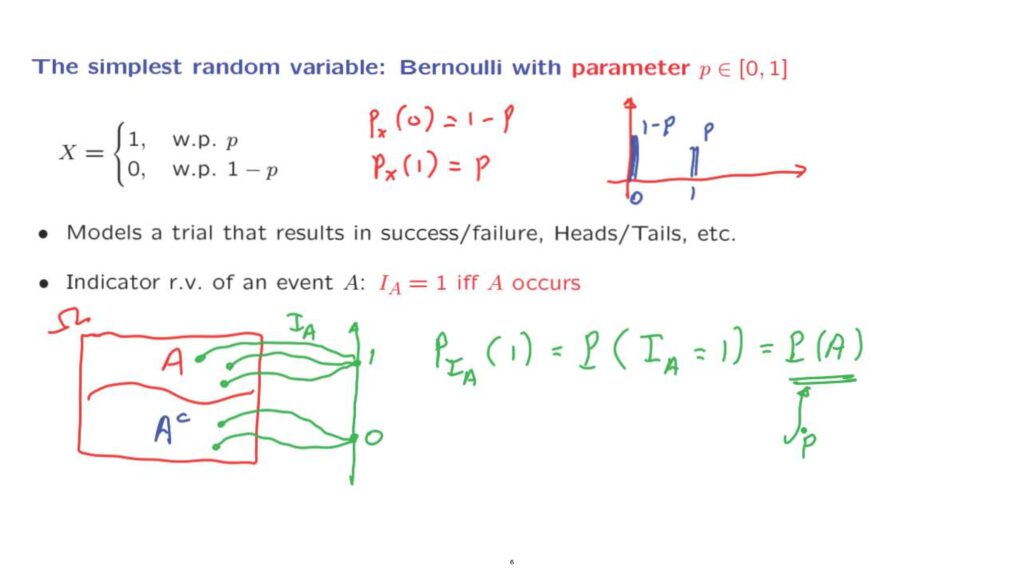We now want to introduce some examples of random variables, and we will start with the simplest conceivable random variable– a random variable that takes the values of 0 or 1, with certain given probabilities.
Such a random variable is called a Bernoulli random variable.
And the distribution of this random variable is determined by this parameter p, which is a given number that lies in the interval between 0 and 1.
Using PMF notation, we have the probability of 0 being equal to 1 minus p and the probability of taking the value 1 equal to p.
If you wish to plot this particular PMF, the plot is rather simple.
It consists of two bars, one at 0 and one at 1.

This one has a height of p and this has a height of 1 minus p.
Bernoulli random variables show up whenever you’re trying to model a situation where you run a trial.
And that trial can result in two alternative outcomes, either success or failure, or heads versus tails, and so on.
Another situation where Bernoulli random variables show up is when we’re making a connection between events and random variables.
Here’s how this connection is made.
We have our sample space, omega.
And within that sample space, we have a certain event, A.
And outside of the event A, of course, we have the complement of A.
Our random variable is defined so that it takes a value of 1, whenever the outcome of the experiment lies in A.

And it takes a value of 0 whenever the outcome of the experiment lies outside the event A, so that it lies in the complement.
This random variable is called the indicator random variable of the event A.
It is equal to 1 if and only if event A occurs.
And the PMF of that random variable can be found as follows.
This is PMF notation.
This is the equivalent probabilistic notation.
This is the probability that the random variable takes a value 1.
Now the random variable takes the value of 1 if and only if event A occurs.
And so what we have is that our random variable, the indicator random variable, is a Bernoulli random variable with a parameter p equal to the probability of the event of interest.
Indicator random variables are very useful because they allow us to translate a manipulation of events to a manipulation of random variables.
And sometimes the algebra of working with random variable is easier than working with events, as we will see in some later examples.